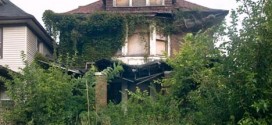While the rest of the nation’s housing markets experience various levels of recovery, most markets in Florida seem to be relapsing to the heyday of the Foreclosure Era after a brief period of improvement.
With delinquencies and defaults ranking among the worst in the nation, Florida is also burdened with extraordinary backlogged inventories in this judicial state which is a nexus for foreclosure legal battles that have slowed processing down more than elsewhere. The result is that Florida’s beach resorts and vacation spots are easy pickings for hedge fund investors.
Jack McCabe, a pre-eminent Florida real estate economist, begins a conversation with some frightening numbers:
- Florida is once again leading the nation in new foreclosures. In February RealtyTrac reported that Florida posted the nation’s highest state foreclosure rate for the sixth consecutive month in February, reporting one in every 282 housing units with a foreclosure filing during the month. Florida cities accounted for seven of the nation’s 10 highest metro foreclosure rates in February, led by the Miami, Orlando, Ocala, Tampa and Palm Bay metro areas in the top five spots.
- More than 1.1 million of Florida’s 9 million residences, or roughly 11 percent, are in some stage of distress that most likely will result in sales in the next two to three years. To put that into perspective, the entire national visible inventory of foreclosures today is 1.1 million, according to CoreLogic.
- About 550,000 mortgage holders in Florida have not made a mortgage payment in more than 90 days but have not received a notice of foreclosure. Banks shelved new foreclosure filings for much of 2012 while several lawsuits were pending and previous fraudulent foreclosure filings were adjudicated. As a result, the state’s shadow inventory has ballooned. At the end of 2012, 371,119 foreclosure cases were open in Florida.
- The current backlog of unsold inventory is nearly half as large as all the foreclosures completed in the state over the past six years. Since 2006, 450,000 foreclosures have been completed in Florida. Banks still own 200,000 real estate owned properties, or REOs.
Florida’s foreclosure problems have blunted the positive rate of price increases achieved the so-called Florida Phenomenon two years ago and only one of the state’s markets, Tallahassee registered a negative media list price compared to last year in Realtor.com’s February report.
One of the most important outcomes of Florida’s chronic foreclosure crisis is the arrival of massively financed hedge funds ready to spend billions to buy foreclosures as cheaply as 50 cents on the dollar in some of the world’s finest resort destinations. Investors played the central role the renaissance in 2011 and now McCabe reports they are very active.
Large investors, including Waypoint Homes of California and Blackstone Group are very active in the state. Blackstone has focused on the Tampa market and erroneous report circulated earlier this year that Blackstone planned to spend a billion dollars in the Tampa market. Now it is reportedly spending a reported $100 million per week to buy single-family homes and has purchased 250 single-family homes in the Sarasota area.
One measure of the impact of hedge funds investors is bulk sales of foreclosures sold before they are marketed as REOs and listed through Realtors on multiple listing services.
“It used to be that Realtors handled 75 to 77 percent of the transactions in a normal marketplace,” said McCabe. “But now I think it’s closer to 60 percent.”
Funds planning to buy, rehab and rent foreclosures have an improving market. The loss in homeownership, damaged credit and job losses have driven rental demand to the highest level on record. In 2005, Florida had a 71 percent-29 percent split between homeowners and renters. That ratio has rapidly changed to 63 percent buyers and 37 percent renters.
 RealEstateEconomyWatch.com Insight and Intelligence on Residential Real Estate
RealEstateEconomyWatch.com Insight and Intelligence on Residential Real Estate
